
Alternatives to Blue Spruce: Top Conifers for Michigan Landscapes
DOWNLOADApril 30, 2023 - Bert Cregg, Michigan State University Department of Horticulture and Department of Forestry
This document was originally published in July 2012 as Alternative Conifers for Michigan Landscapes. It was revised in April 2023 to give homeowners and landscapers further options for blue spruce replacement.
Colorado blue spruce has long been a favorite landscape conifer for Michigan homeowners and landscapers. Unfortunately, blue spruce trees throughout the state are in widespread decline due to an array of insect pests and fungal pathogens, particularly needlecast diseases that cause trees to progressively lose their needles. As a result, homeowners and landscapers are often searching for alternative conifers to replace blue spruce trees. This document lists medium to large conifers adapted to Michigan soils and climate, which can fulfill many of the same landscape functions as blue spruce. They often act as specimen trees, which are used as focal points in the landscape, or they screen out unwanted views. The list of trees is divided into two groups: those that are relatively common in the nursery trade and should be available in most nurseries, and those that are less common but can be found in larger garden centers or specialty nurseries.
Widely available
Concolor fir (Abies concolor) is native to the western U.S. It grows 1 to 2 feet per year on good sites. It has blue needles, often as blue as many blue spruces. Unlike many other firs, concolor fir can handle somewhat alkaline soils. Avoid excessively wet sites and frost pockets since concolor firs often break bud early resulting in frost damage in the spring.
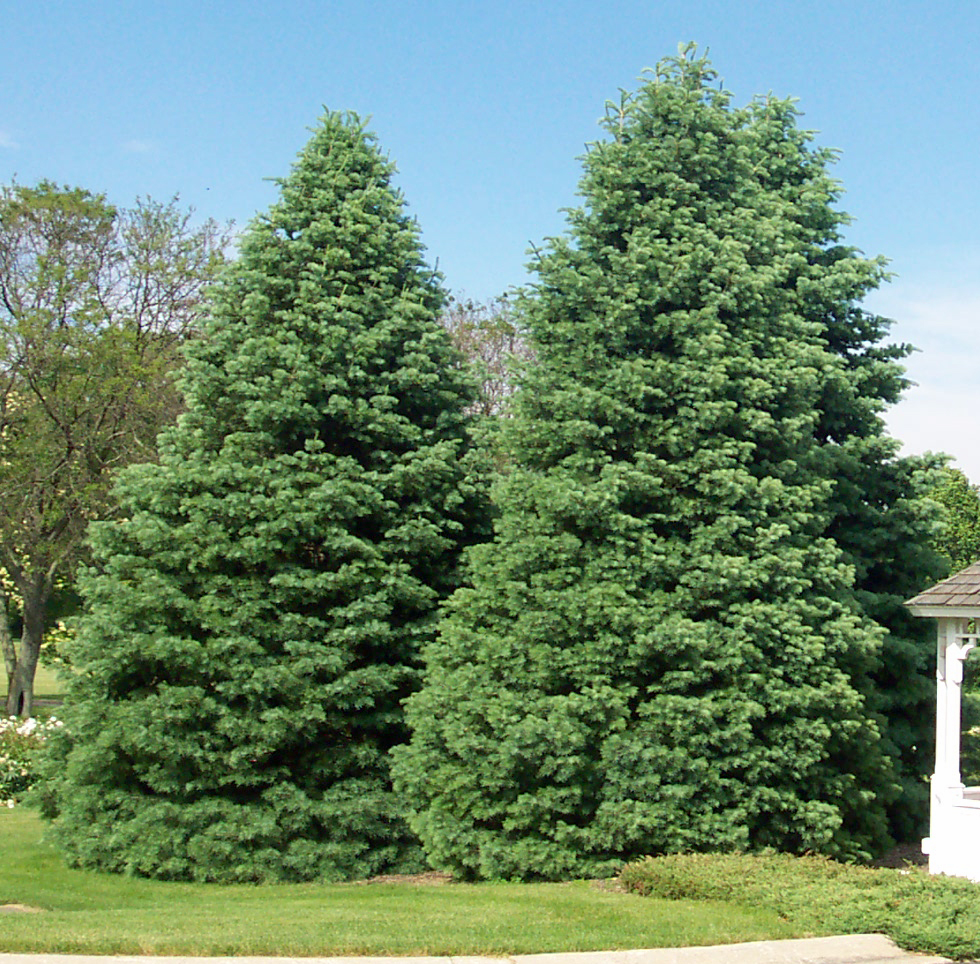
Norway spruce (Picea abies) is a fast-growing conifer that grows 1 to 3 feet per year and does well throughout Michigan. Norway spruce have dark green needles on orange stems.
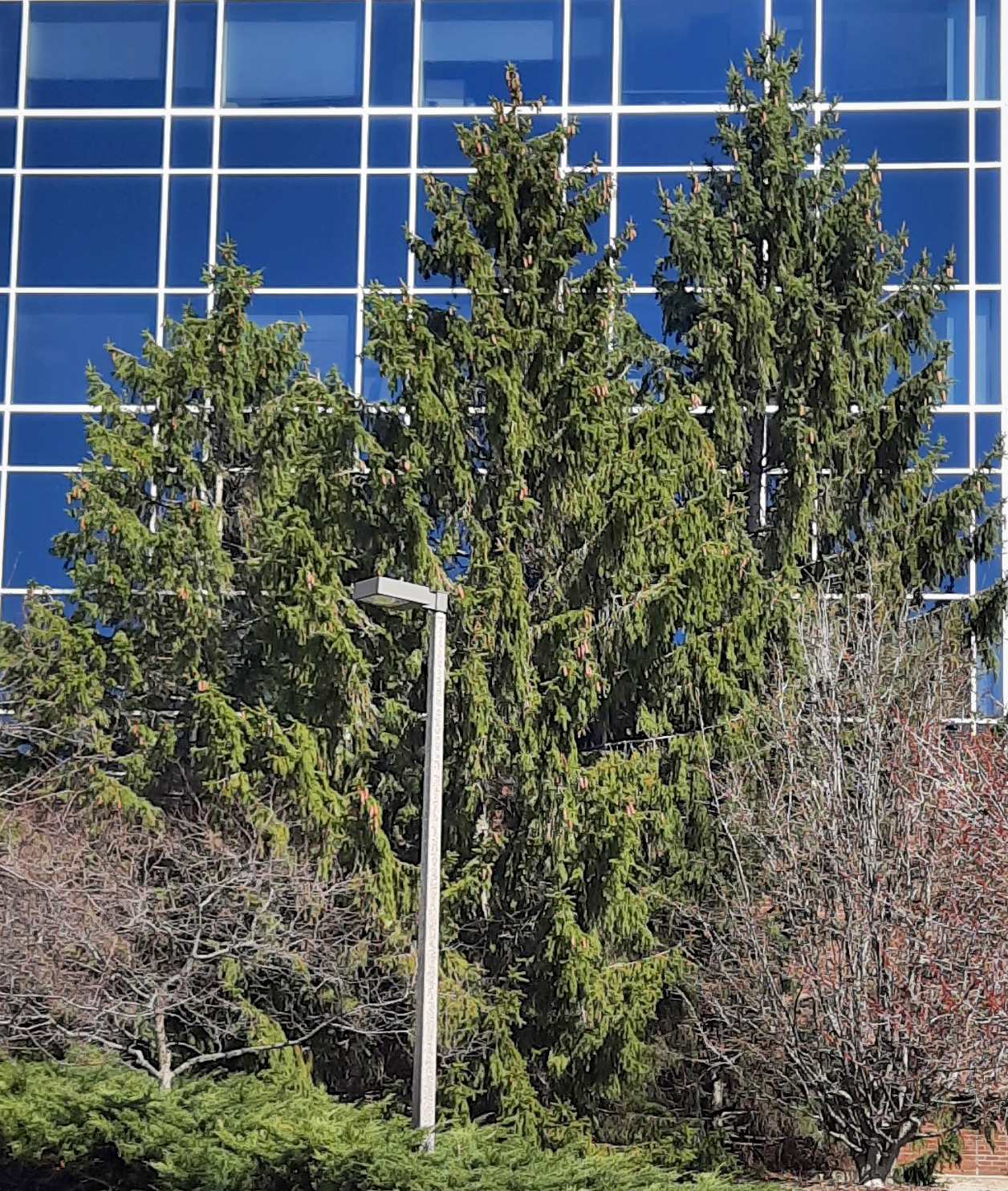
White spruce (Picea glauca) has relatively short, grey-green needles. It is upright and broad in stature, making it excellent as a screen for privacy. An all-around tough tree, it can handle a wide range of sites including clay soils or poor drainage. Native to Michigan, this species can grow 1 to 2 feet per year. A slower growing variety of white spruce, the Black Hills spruce, grows up to 1 foot per year but makes an excellent landscape tree.
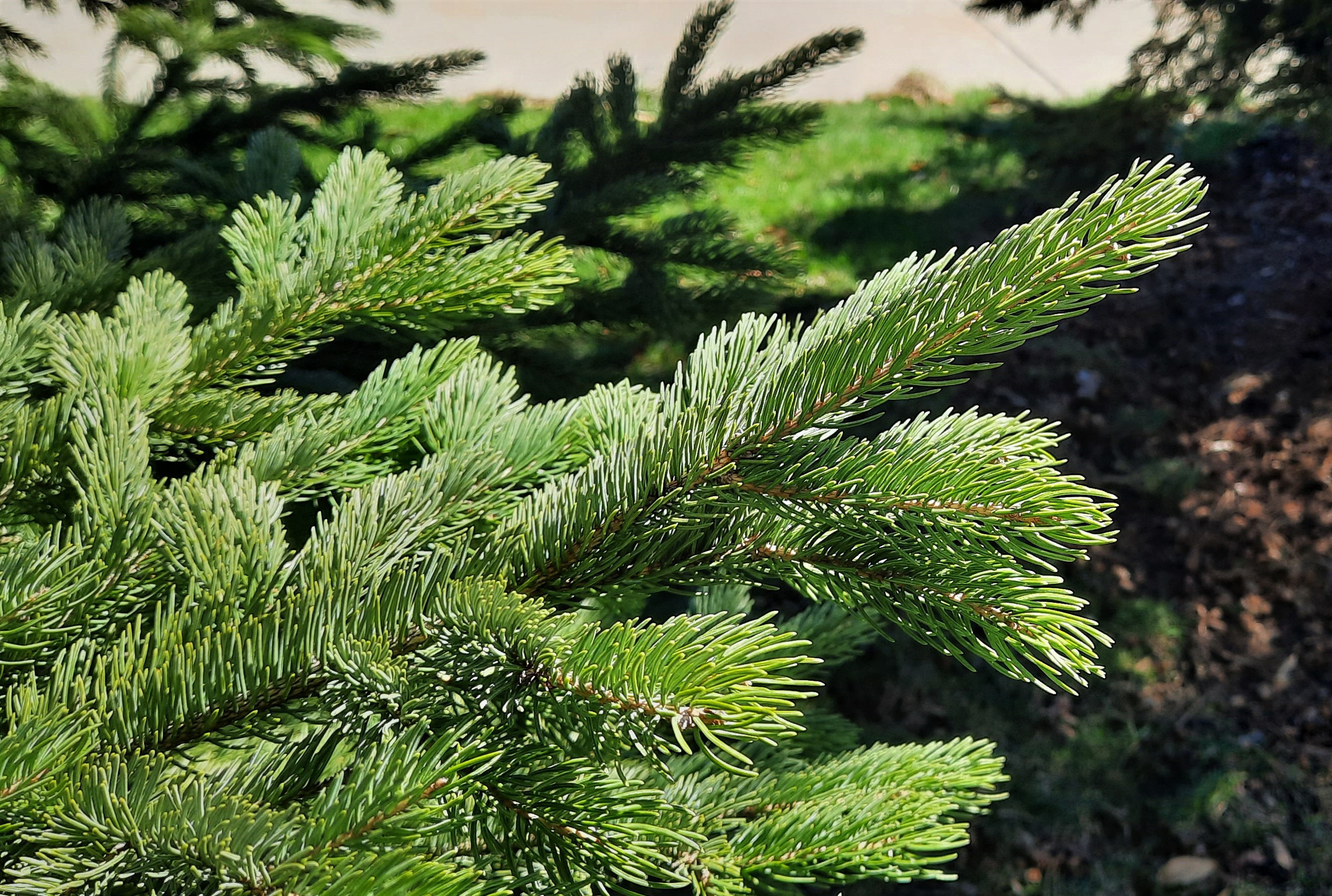
Serbian spruce (Picea omorika) has become increasingly popular in recent years. Growing 1 to 3 feet per year, it has an upright, weeping form. Its blue-green needles with silvery undersides are one of its most attractive features.
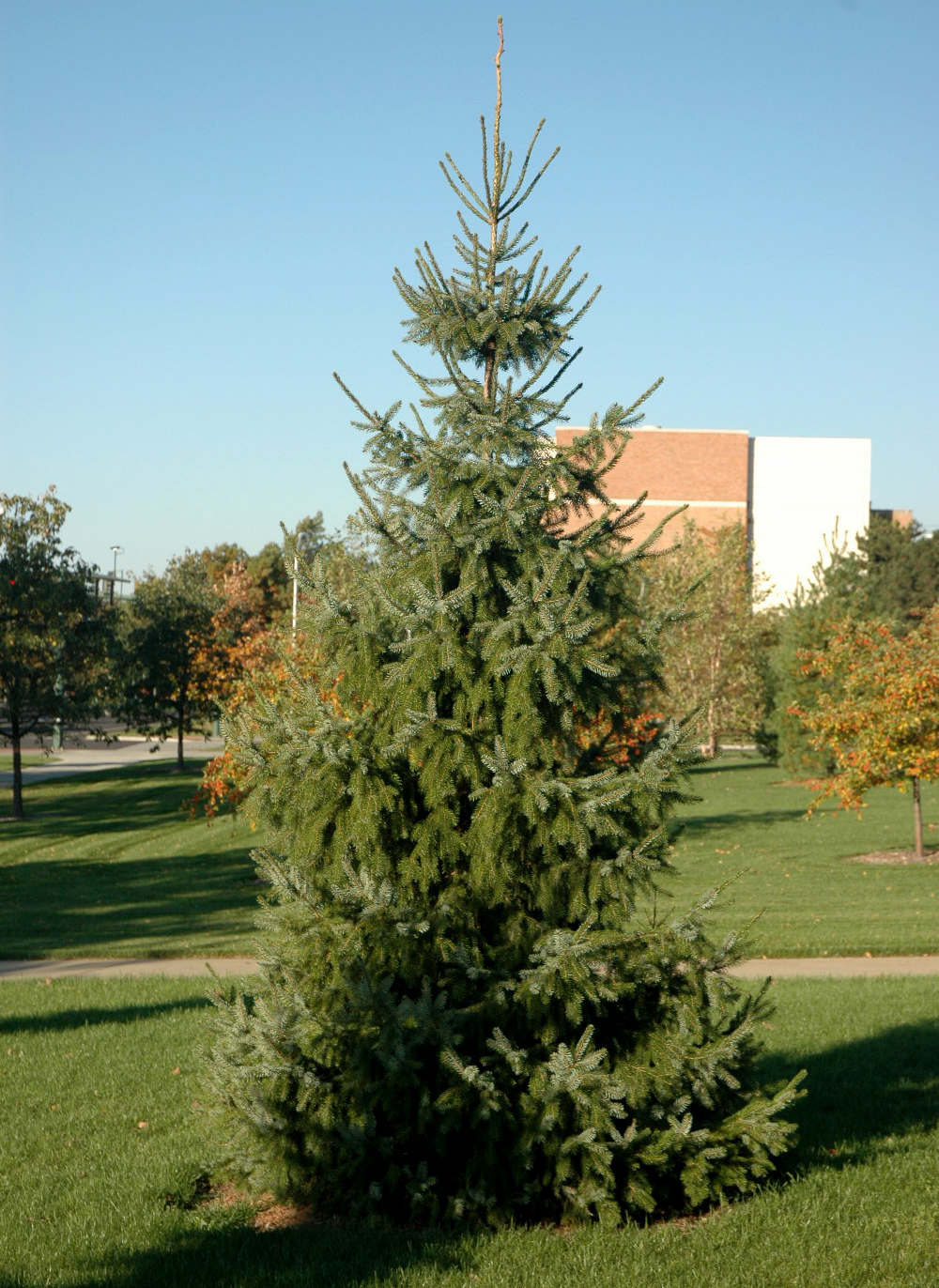
Eastern white pine (Pinus strobus), the state tree of Michigan, is a fast-growing tree achieving 2 to 3 feet of growth or more per year. It can quickly form a screen to block unwanted views. Because homeowners often underestimate the growth rate of white pines, avoid planting them too close to houses or other structures.
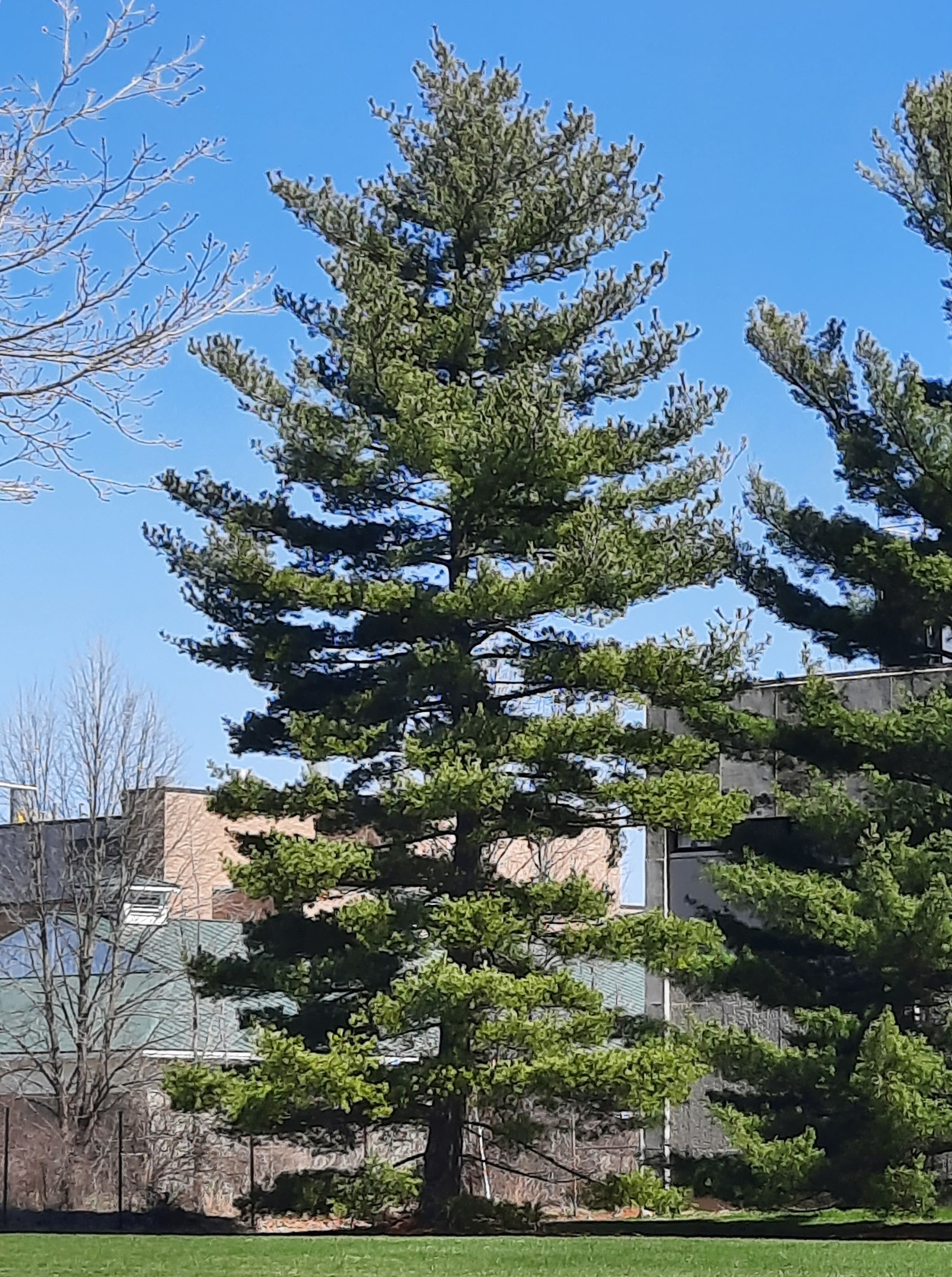
Arborvitae (Thuja occidentalis) trees are widely planted as screens to provide backyard privacy. They grow well on a range of sites and can even tolerate relatively wet soils. Deer browse is a concern where deer populations are high.
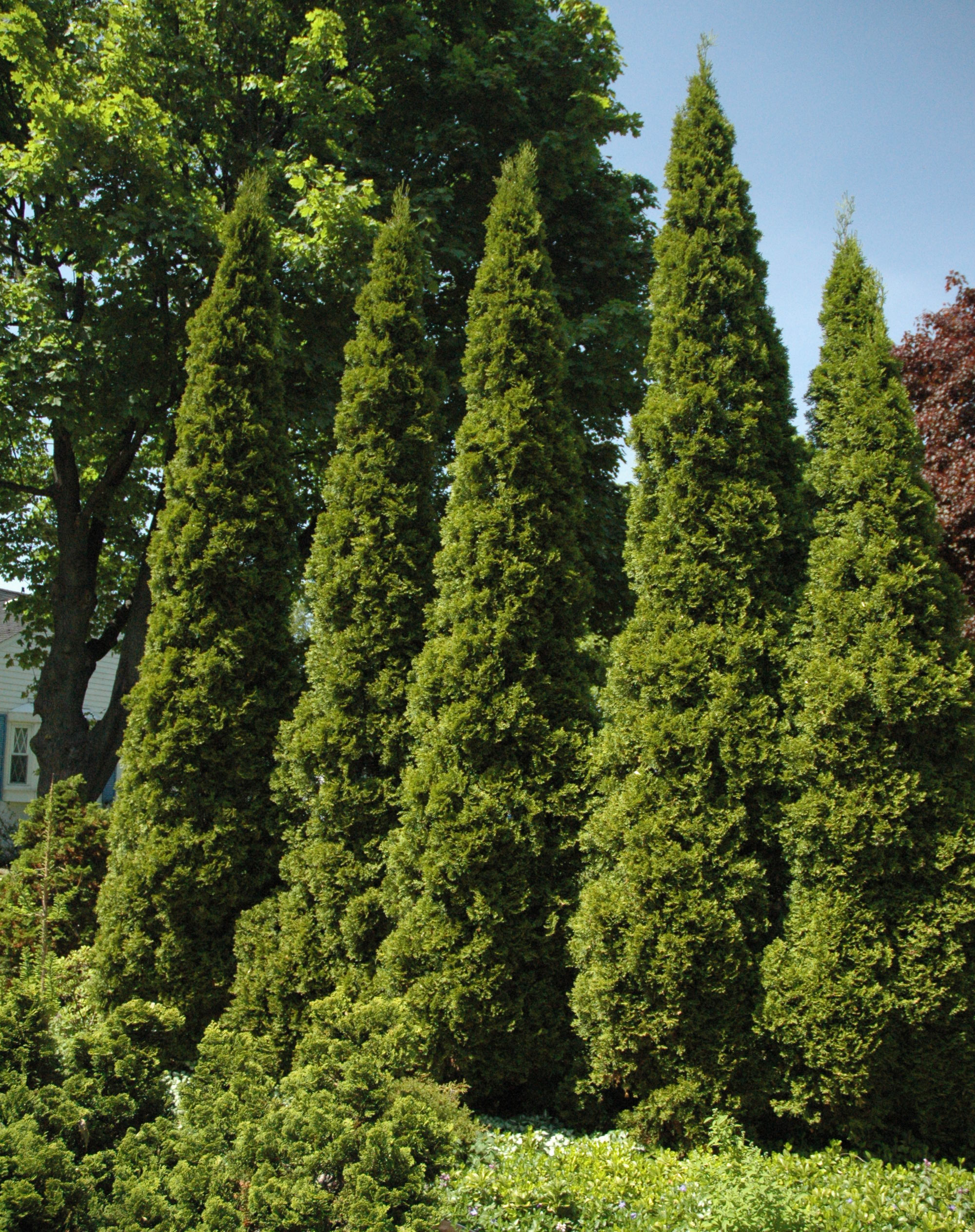
Less common but worth looking for
Korean fir (Abies koreana) grows well in Michigan and can tolerate a broader range of sites than most firs. An intermediate grower, Korean fir grows about 1 foot per year. Needles are dark green with a silvery underside.
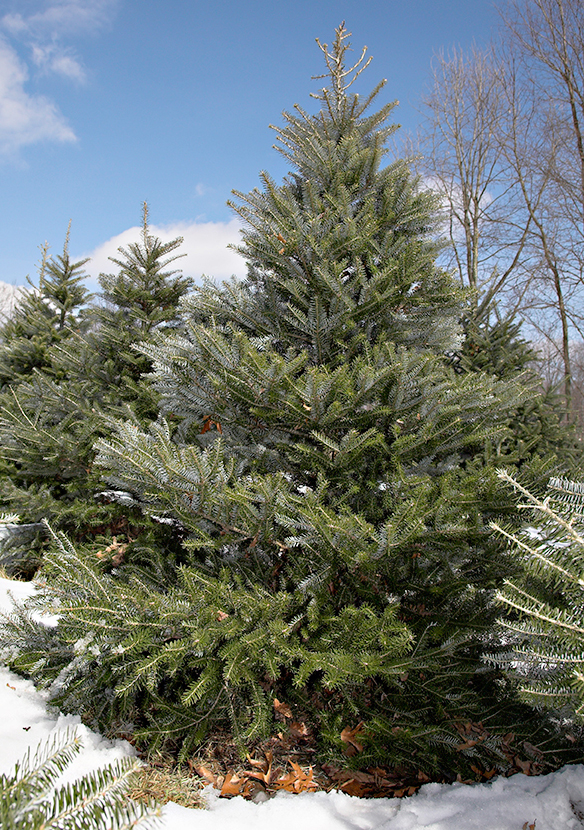
Alaska cypress (Cupressus nootkatensis), a large, graceful tree, makes a wonderful specimen tree. A fast grower at 1 to 2 feet per year, it is native to the Cascade Mountains from Oregon to Alaska.
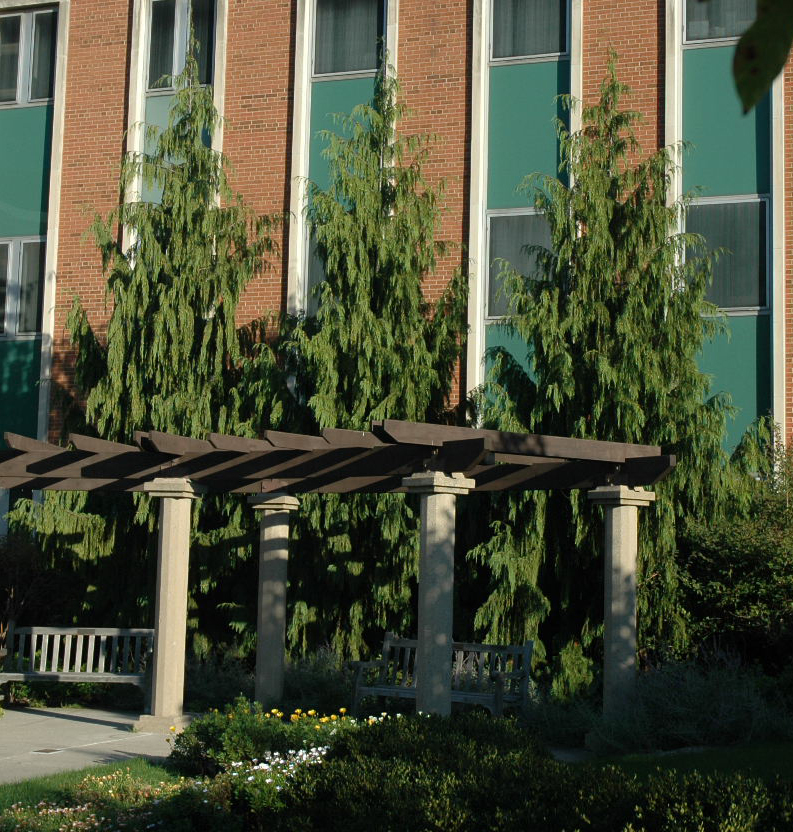
Dawn redwood (Metasequoia glyptostroboides) is a deciduous conifer that adds a unique appeal to the landscape. A fast-growing tree at 1 to 2 feet or more per year, it has a tightly pyramidal growth form. Dawn redwood is native to China and was thought to be extinct until its discovery by scientists in the 1940s. The needles are soft-green and shed in the fall to reveal interesting bark patterns.
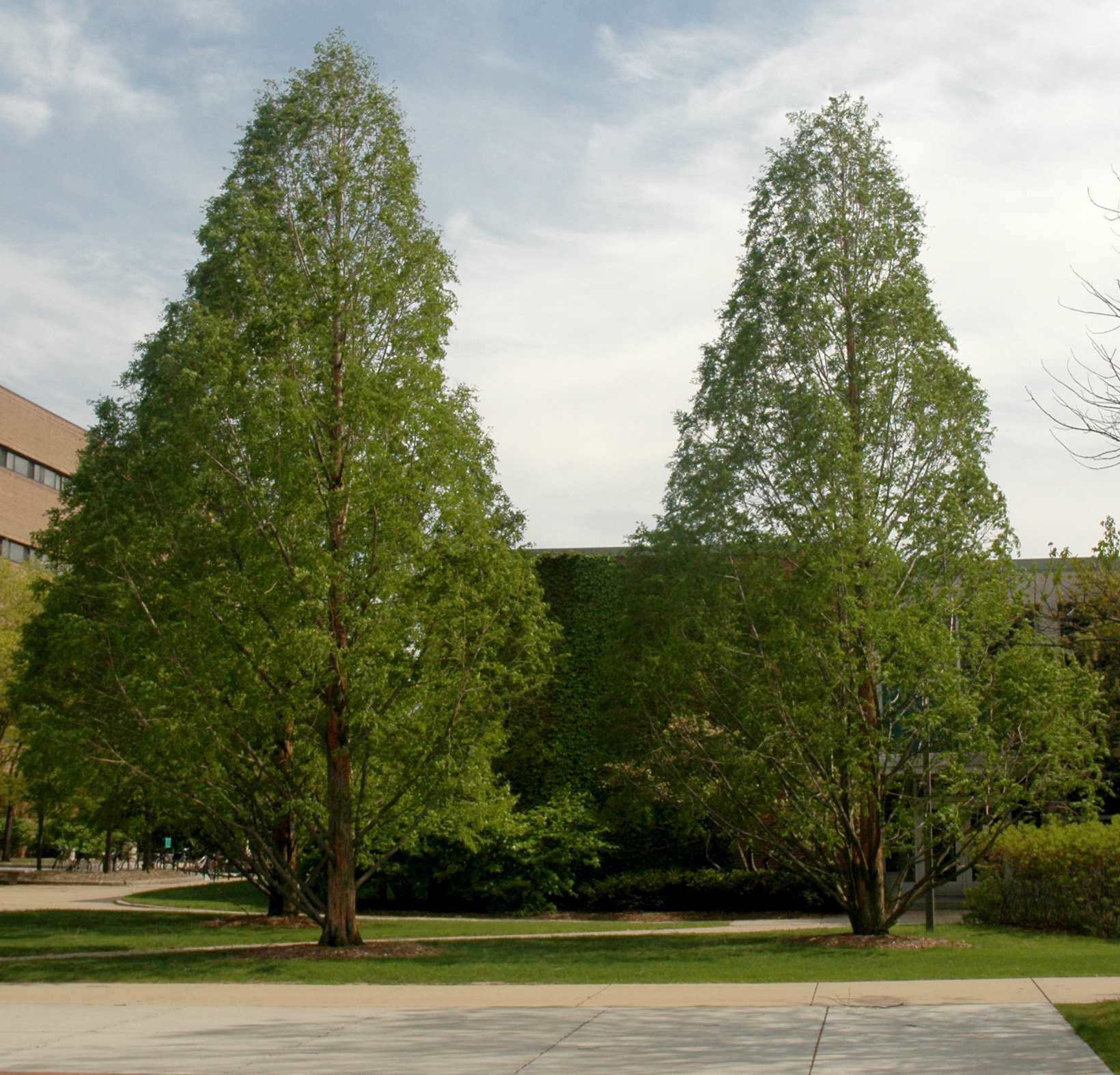
Swiss stone pine (Pinus cembra), an intermediate-sized upright tree, grows 1 foot per year. Native to central Europe, it is a very reliable grower in the upper Midwest. It is in the white pine group with needles in groups of five that are a striking, dark green.
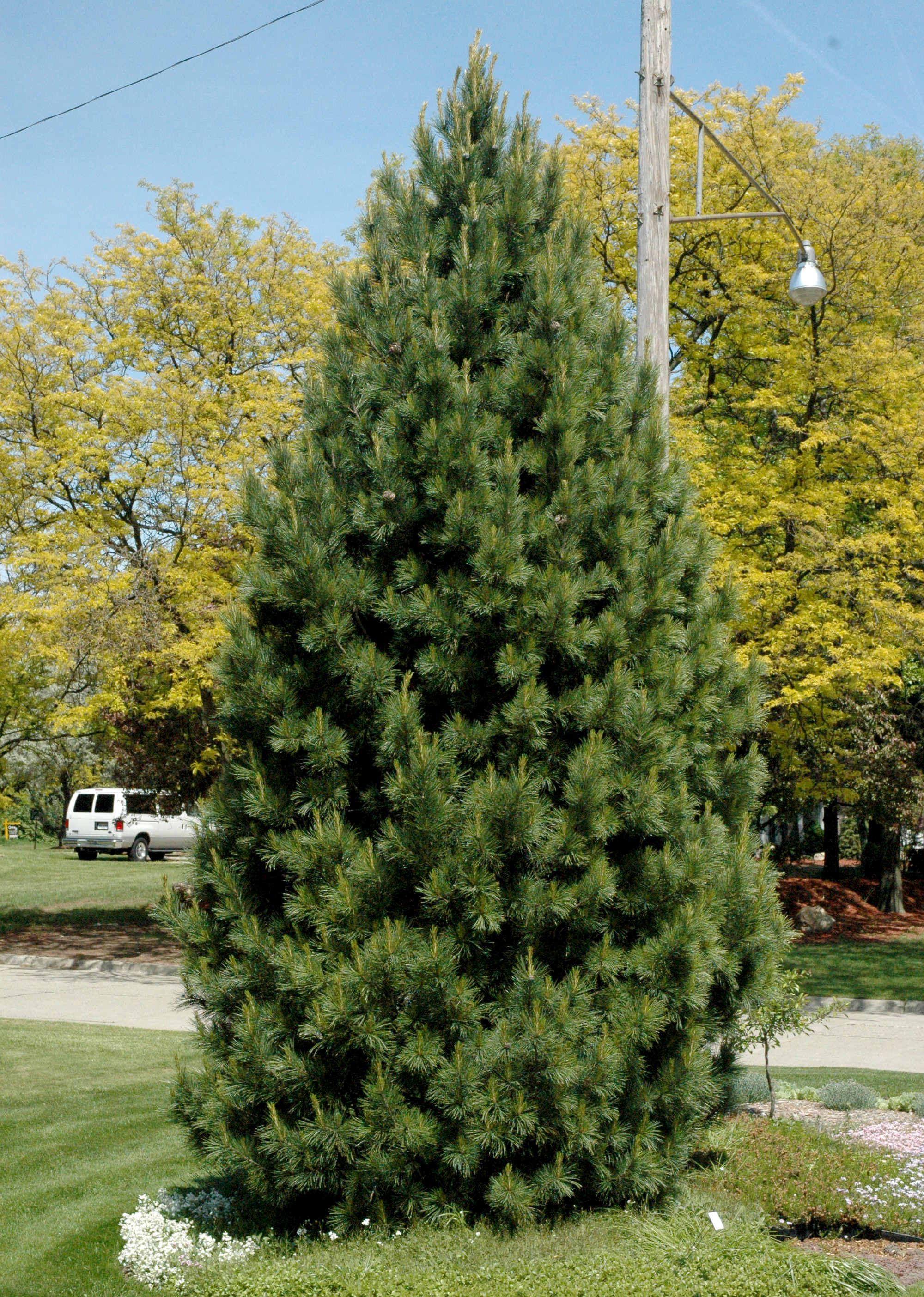
Baldcypress (Taxodium distichum), like dawn redwood, is a fast-growing deciduous conifer that grows well even on wet sites. The two species are sometimes confused but baldcypress tends to have a coarser branch structure and more irregular crown than dawn redwood. Although it is native to bottomlands in the southern U.S., baldcypress grows well in lower Michigan and can tolerate relatively dry conditions.
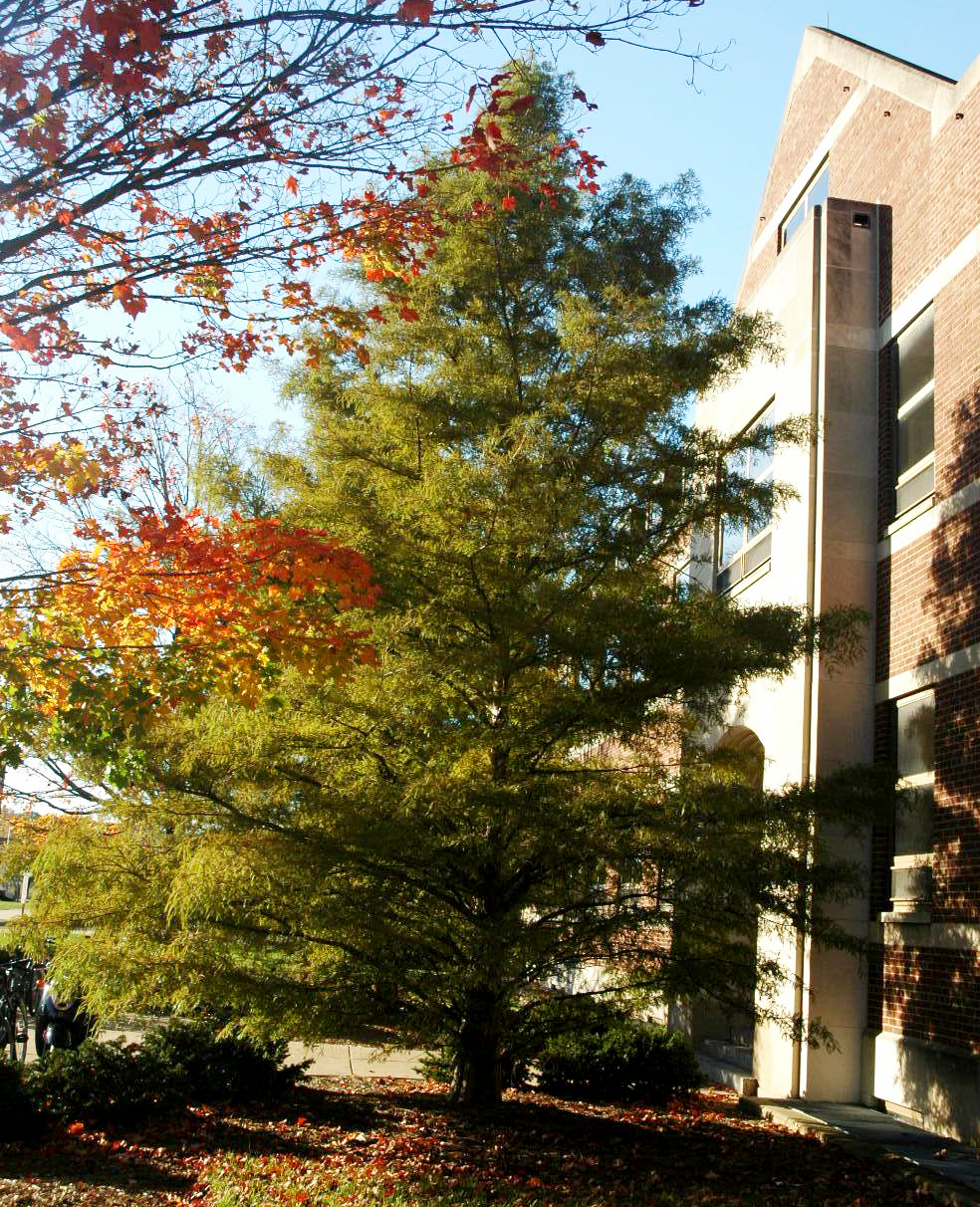



 Print
Print Email
Email



